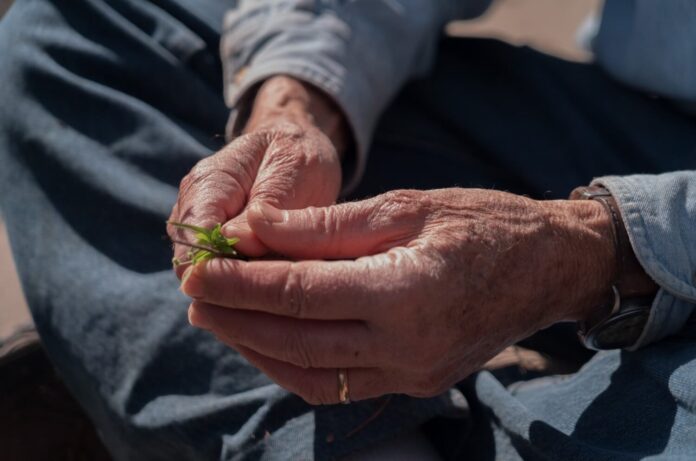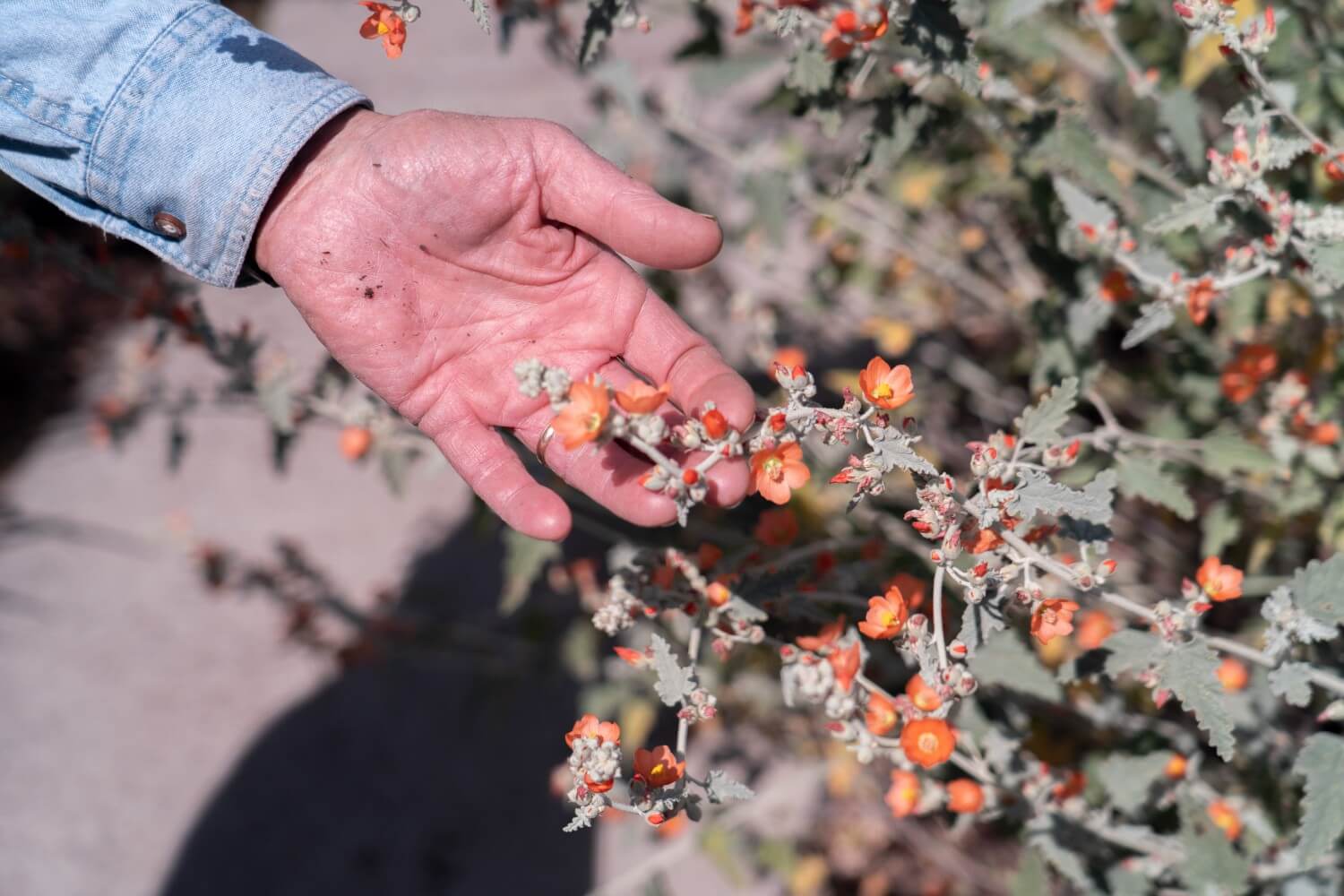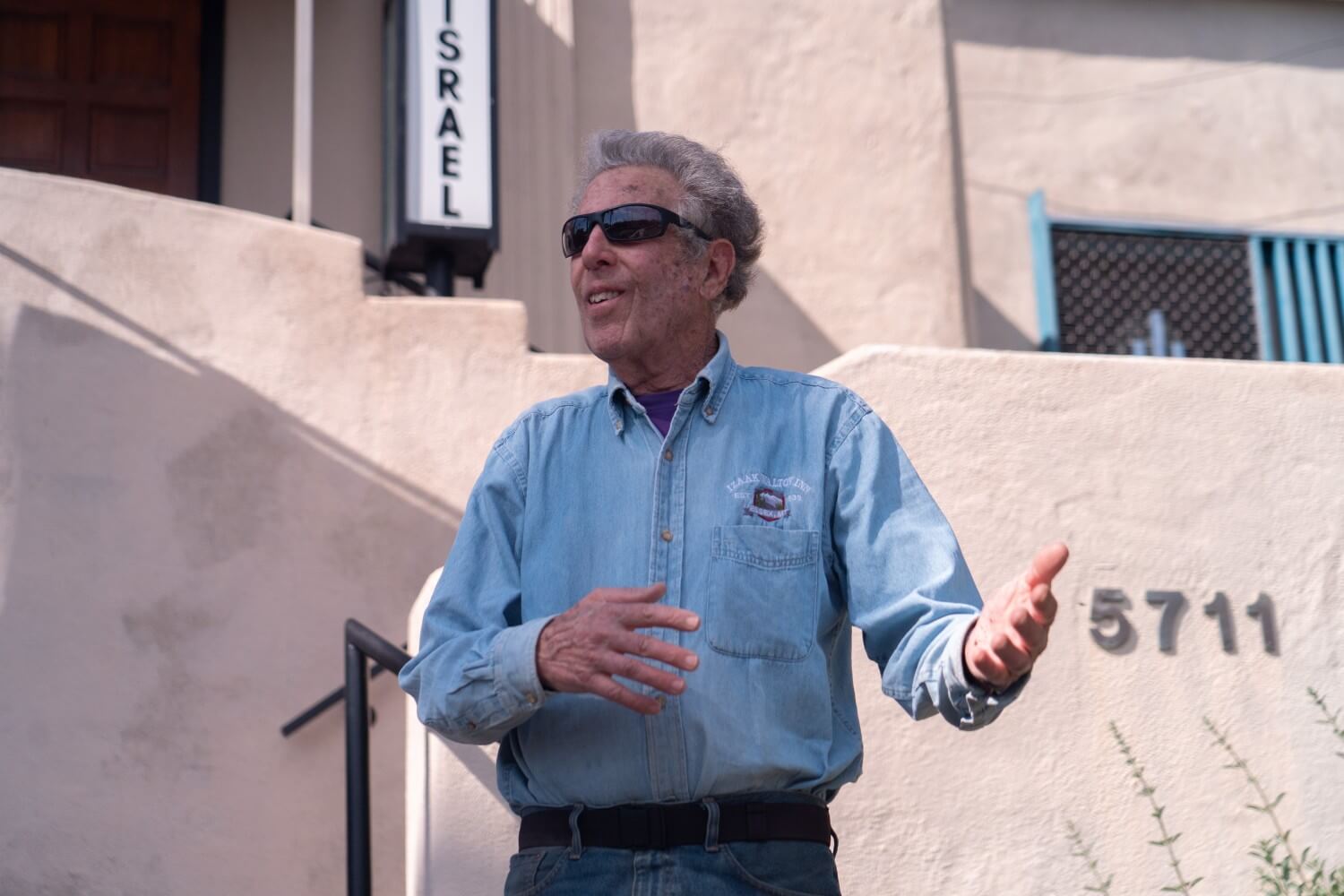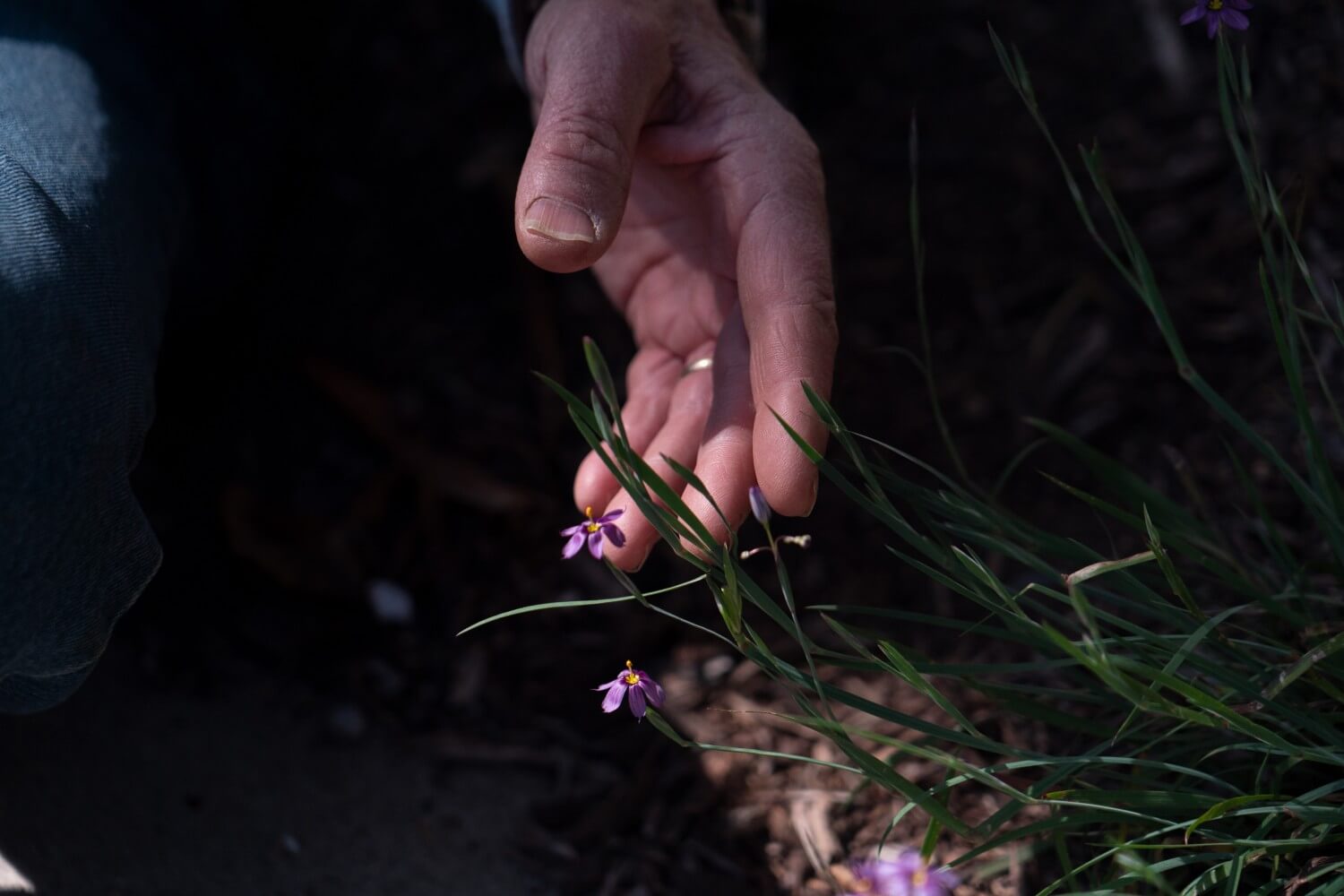
Glances of blues, purples, oranges and dusty greens – the palette of desert flora – peek out from behind the decoratively wrought fence of Temple Beth Israel in Highland Park. On the other side, the synagogue’s native garden blooms in full expanse. Patches of grass flank the main path leading to the synagogue; dirt paths on either side turn past sprawling succulents, California poppies, apricot mallow, purple sage, blue-eyed grasses and olive trees, towards the citrus around the back of the property.
Rabbi Jason Rosner said environmentalism is Temple Beth Israel’s main social justice push and a shared interest among its congregation, which includes many scientists and nature enthusiasts. Rosner, whose grandmother worked to raise awareness about acid rain in the 80s, and who has served on environmental councils since elementary school, said he falls into the latter category.
Rosner said he sees environmentalism as an aspect of faith and a scriptural mandate, as Genesis instructs that humans are given the ability to control the environment in which they are introduced — along with the responsibility to protect it.
“I tend to think of it as saying humanity lives in a giant terrarium. And we have to clean up after ourselves,” Rosner said. “Because there’s no outside of the terrarium. Once we’ve polluted it, we’re done. We start to choke on our own waste.”

According to Rosner, the Talmud says that no matter how comfortable you are, you have to get your hands dirty in actual work. Toward these ends of environmental responsibility and hands-on work, Temple Beth Israel is partnering with other Jewish organizations to plant 100 shade trees in Boyle Heights to combat urban heat spots.
“For me, if you profess one thing in your house of worship, and then check your values at the door, you’ve got no business being here,” Rosner said. “If you’re in the synagogue or the church or the mosque or the ashram and you say, ‘I believe strongly in the importance of taking care of the planet that we’re living on,’ then you should go out and you should do it personally.”
In addition to housing a volunteer-tended, low-flow native plant garden, the synagogue installed solar panels over three years ago, continues to focus on reducing the use of disposables and does not serve meat, according to Rosner.
The native plant garden and the installation of solar panels were the ideas of Jerry Schneider, who has attended the synagogue since 2002 and serves on its board of directors. According to Schneider, the plants in Temple Beth Israel’s garden are irrigated only when first introduced, then survive solely on rainfall, save for the citrus trees in the summer months.
According to Schneider, the synagogue is one of the oldest in LA. The citrus, olive and palm trees, and two swaths of the lawn, were kept even as the landscaping evolved.
“They’re not native, but these were stable elements and we landscaped around and incorporated them,” Schneider said. “So that adds to the garden, they’re sort of layers of history and tradition.”
Schneider said that as the garden became a tranquil space, bringing in bees, birds and butterflies, everyone involved in the project felt they were doing the right thing. Like the plants opening in the garden, so too, sustainability efforts begin to bloom once cultivated, he said.

According to Schneider, many Jewish holidays are tied to seasons and are reflected in the garden. For example, Tu BiShvat, the “birthday of trees,” is visible in the plant life of the synagogue.
“There are some holidays that are tied to the destruction of the ancient temples,” Schneider said. “And coincidentally the time of year that we celebrate that, the garden looks the worst because it’s the end of the stressful summer. So the garden seasons basically acknowledge the setting of our biblical ancestors who lived off the land.”
Jacob Cunningham, a member of the synagogue for about eight years and a board member for two, is frequently at the synagogue and said that not a visit goes by when he does not pause to take in the quintessentially Southern-Californian beauty of the grounds. Cunningham said he helps out with garden upkeep, sometimes with his seven-year-old son.

According to Cunningham, the temple is planning monthly lay-led services hosted in the garden. Being outside and listening to the sounds of urban nature – squirrels in the trees, cars driving by, birds and helicopters overhead, children running around – rather than being in the pews gives the services an organic relaxed feeling, Cunningham said.
According to Rosner, one of the main pillars of Judaism is Tikkun olam, which in Hebrew means “repairing of the world.” He said the theology behind Tikkun olam is that humans are partners with the source of divine energy in the universe and are helping to beautify the planet and society where we find ourselves.
“There’s a sense of historic time in Judaism — that we are not the first generation to be on the planet,” Rosner said. “And we owe it to the people who came before us that we need to leave it better than we found it. And to the people that come after us, we owe a planet to live on, for their own psychospiritual expression, for them to live out their lives. So we don’t get to pull the ladder up after us.”
![]()


































